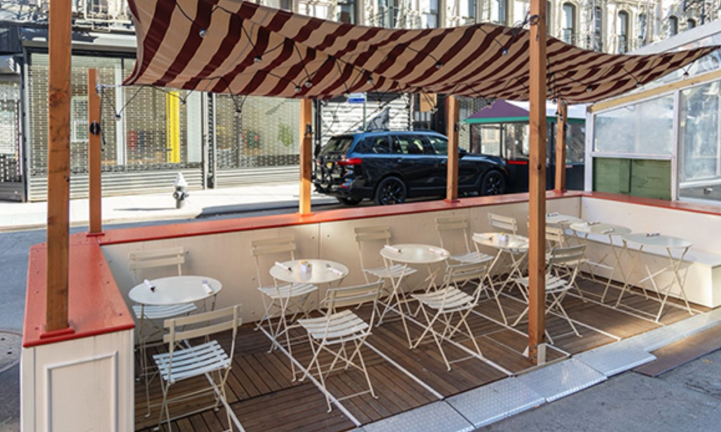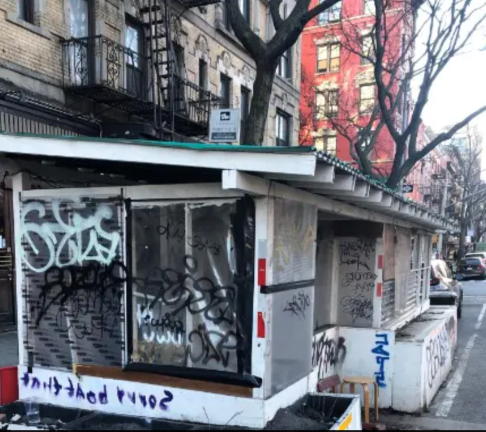UES Restaurants Scramble for Approval as New Dining Shed Season Looms
The revamped Dining Out NYC program will have a quarter of the sheds, and half the number of restaurants, as during the COVID boom. About 3,000 sheds are expected to open citywide by April 1. Applicants are seeking community board nods to influence DOT’s final approval.


When New York City’s revamped outdoor dining program rolls out on April 1, local residents can expect to see far fewer dining sheds than before. Many applications have yet to be fully approved, although the city’s Department of Transportation has made bureaucratic compromises to ensure that sheds can operate during the approval process.
Applicants have been rushing to community boards everywhere, including CB8 on Manhattan’s East Side, to earn an advisory stamp of approval that they can take to the DOT. While community boards don’t have power to genuinely approve or deny an applicant, their input can be considered by city agencies, and it is recommended that applicants appear before them. Community Board 8–which covers the Upper East Side, Lenox Hill, Yorkville, and Roosevelt Island–had two dozen applicants on their schedule earlier this month seeking a last-minute nod of approval.
Nearly 3,000 sheds will be in operation citywide by April 1, the city’s DOT told Straus News. This confirms a significant downtick, of more than 75 percent, from the roughly 13,000 sheds identified by a prominent NYU study during the phenomenon’s pandemic peak. This isn’t different from figures announced by the agency on Feb. 28.
The sheds are either placed on the sidewalk or roadway, a distinction that comes with separate rules. Sidewalk sheds are allowed to stay up year-round, meaning that those that go up by April will remain, if fully approved. Roadway sheds must come down by Nov. 21, approved or not.
Since individual restaurants can apply for both a roadside and a sidewalk shed, the DOT notes that a significant chunk of sheds in the original program were doubled-up at the same establishments, so to speak. They estimate that 6,000 to 8,000 restaurants participated overall, with about half as many participating now.
The figures are no longer as grim as a New York Times report from mid-February made it appear, when only 39 applications—out of a backlog of 4,000—had been fully approved.
The DOT then “cut” some “red tape” to ensure that under-review roadway sheds can operate, which was already the case for sidewalk sheds; they confirmed to Straus News that these “conditional” roadway approvals and waivers for under-review sidewalk applications had helped the process. The DOT did not confirm how many applications have been confirmed since, instead pointing to the 3,000 that will be allowed to operate regardless.
The overall decline in “dining out” participants has been attributed, at least by industry representatives, to a host of new regulations that came with the reworked application. In addition to rat-proofing changes such as sand barriers being replaced by water barriers, as well as changed measurement requirements, the applications come with thousands of dollars in fees.
The new program also came with some concessions to local opponents of dining sheds, who have generally argued that they’re either “blights” or safety hazards, particularly traffic ones. Now sheds must provide a “clear pathway” to commuters or pedestrians.
Community Board 2’s shed applicant list from this month, which pertains to a chunk of Lower Manhattan, included notes that could provide a snapshot of broader compliance issues. For example, eight applicants needed a “lane waiver” from the DOT, while two were not ADA compliant. There were 28 considered, total, meaning that nearly half of the sheds needed correction before full approval.
The new program has made some concessions to local opponents of dining sheds, who have generally argued that they’re either “blights” or safety hazards.